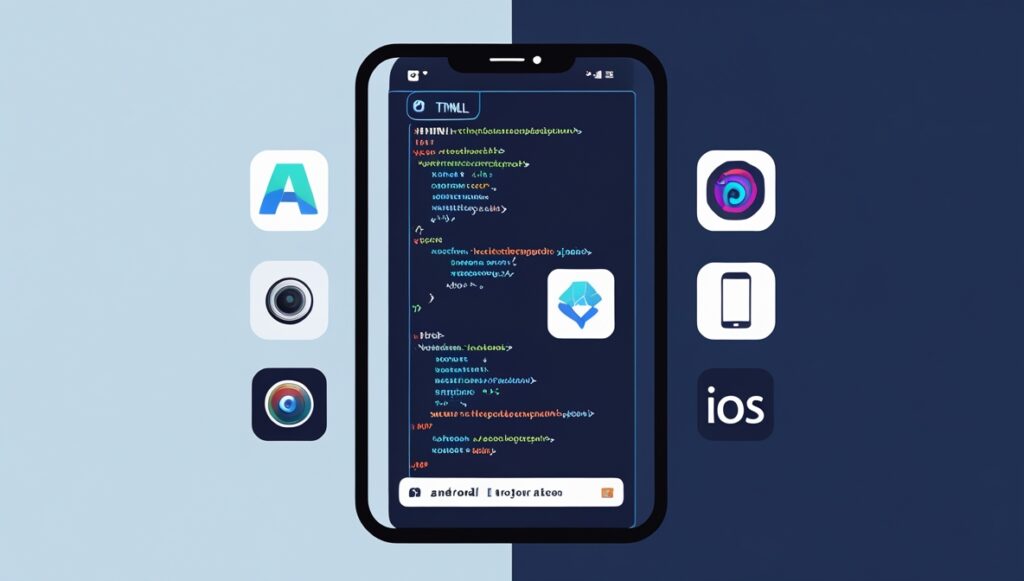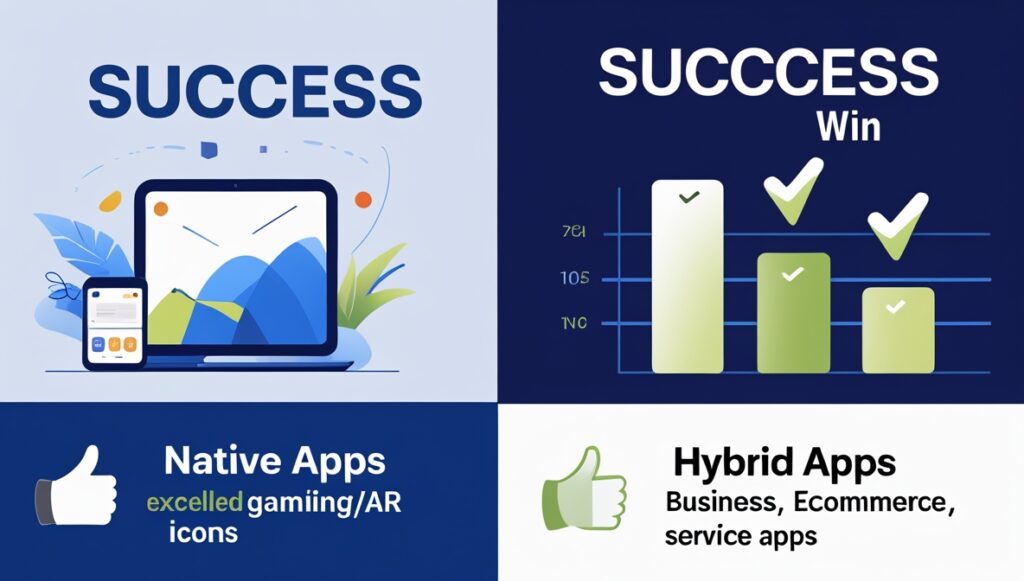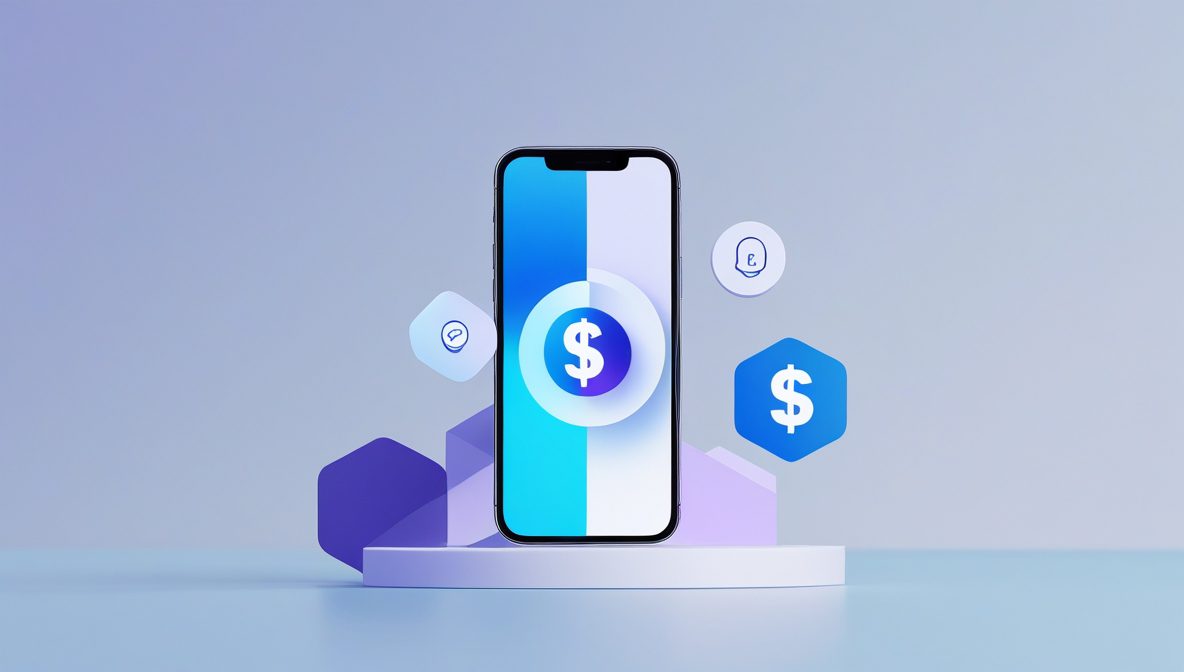Native and hybrid are terms that tend to grab the limelight in native vs hybrid app development space. While native applications are lauded for their platform-specific optimization and advanced capabilities, hybrid apps continue to hold strong relevance, especially where performance, budget, and reach intersect. In a market that’s both competitive and resource-conscious, choosing hybrid apps development is far from a compromise.
Hybrid apps are increasingly viable thanks to powerful frameworks, better hardware support, and improved developer tooling. From emerging startups to enterprise solutions, businesses use hybrid apps to accelerate development timelines, reduce costs, and reach users across both Android and iOS without maintaining separate codebases. This article dives into why hybrid apps still matter and how they remain a strategic choice in today’s mobile ecosystem.
Understanding the Core of Hybrid Apps

Hybrid apps blend features from both native and web applications. They are commonly constructed with the web technologies such as HTML, CSS and JavaScript and are enclosed in a native container through which they can be distributed in various platforms. The model will make development easier without loss of device level features including GPS, camera, and push notifications.
The idea has changed extraordinarily with time. Early hybrid apps were criticized for performance limitations and poor user experiences, but modern toolkits like Ionic, React Native, and Flutter have changed the game. These frameworks allow hybrid apps to behave more like their native counterparts in both function and feel.
Which Is a Hybrid App?
A hybrid app is simply a web app that has been encapsulated. Unlike fully web-based applications, hybrid apps can be installed on a device and distributed via app stores. They execute within a native shell, which communicates with the web view component in a device, thereby enabling programmers to code under a common codebase in both of the key mobile platforms.
Areas of such an approach lie in optimizing the coding process and decreasing a learning curve of developers, particularly those with the background of web developers. With proper optimization, hybrid apps can access hardware APIs and deliver experiences that are nearly indistinguishable from native applications in many use cases.
Historical Development and Market Evolution
The development of hybrid applications became popular in the early 2010s when such frameworks as PhoneGap (now Apache Cordova) were introduced. Creating individual native apps was costly and time-consuming at that point, so the hybrid solutions turned into a fast fix to businesses wanting to develop their mobile components.
Performance problems were solved over time by improvement of let rendering engines and JavaScript optimization. Other larger firms such as Instagram and Uber had started with hybrid modes at early stages to pilot versions and expand rapidly. The difference between native and hybrid is further closing as modules continue to improve the functions and standard of performances.
Key Components and Development Frameworks
Today’s hybrid apps are built using advanced frameworks that offer near-native performance. Meta tools such as React Native enable programmers to create Native UI elements using JavaScript. In the same way, the Google Flutter compiles the code into Flutter to native ARM binaries using Dart language.
These platforms are shipped with rich libraries, communal support, and debugging tools built in. The framework translates into developers being able to develop, test, and deploy applications on the Android, iOS and even the web on a single platform. This makes hybrid apps more efficient and future-ready for companies aiming to iterate fast and maintain flexibility.
Balancing Performance and Cost Efficiency

One of the biggest drivers for choosing hybrid apps is the economic advantage. Creating Android and iOS applications usually demands the employment of specialized talent, doubling cost and time. The hybrid development removes this overlap in that it enables one codebase to be used across different platforms. Besides the cost in development, maintenance is smoother. It is a possibility to apply updates, as well as patches, in a universal manner without making any synchronization of changes occurring in two different codebases. Not only does this save on costs but it also makes it easier to control the version and testing and leaves a more standard (user) experience.
Performance Capabilities of Hybrid Apps Today
Modern hybrid apps are surprisingly performant. They have access to native APIs and device accelerators, and can easily manage tasks such as media render, real-time data sync and offline capability. Performance improvements in mobile processors and memory have also made it easier for hybrid apps to run smoothly. The perception that hybrid apps lag behind in responsiveness is outdated. Frameworks such as Flutter and React Native do have a benchmark to show that they perform almost similarly to native apps in most real-life situations ( Flutter vs Native Performance ). Through optimization and use of platform specific plug-ins, developers can optimize animation, load time and rendering.
Budget-Smart Development Strategies
It is a perfect pathway of development when a business has a tight budget. One development team will be able to provide Android and iOS applications and this will cut overhead without compromising quality. Other frameworks, such as Capacitor or Ionic, provide drag-and-drop UI constructors and components that can accelerate the development process without writing anything instead. Project planning becomes easier with outsourcing or by employing full-stack developers who will be able to take care of the frontend and backend. The need has also given rise to various agencies that specialize in hybrid development and provide ready-made modules and accelerators that reduce the schedules and costing systems.
Maintenance and Scalability on a Budget
Apps are progressive in nature: new functions have to be implemented and errors corrected. Hybrid apps allow centralized updates, making it easier to roll out changes. Developers do not have to update different app stores and they can simply change the common code and pass the changes along to every other user at once. This comes in handy particularly amongst the start up and expanding companies in which the balance of flexibility and speed is valued. Hybrid apps offer a lower total cost of ownership (TCO) and support scale as user bases expand or features become more complex. Even large enterprises benefit by using hybrid apps for internal tools or companion apps.
Reaching Broader Audiences with One Codebase

The ability to publish on multiple platforms using a single codebase gives hybrid apps a strategic edge. They do not need to single out either Android or iOS. Their ability to target both markets without their investment being doubled makes them have an extended potential user base on whose behalf it starts off. The method facilitates consistency branding, feature equity, and quick go-to-market offering. It also does not complicate getting user feedback in terms of demographics and agility in implementing changes using shared intelligence.
Multi-Platform Deployment Made Simple
Using hybrid frameworks, developers may host the applications in the Google Play Store, Apple App Store, and even web owing to Progressive Web App (PWA) strategies. This multi-channel approach will make sure that no category of users could be overlooked by the business. Fragmentation is also minimized through cross-platform capability. Instead of having a number of groups to handle the various editions, organizations are able to operate on a single source of code which enhances efficiency during updates and collaboration.
Consistency Across User Devices
Brands are important and incoherent interfaces can blur it. Hybrid apps ensure that users across different platforms receive a consistent experience, both visually and functionally. Using the same UI components and logic, developers will still be able to do the platform-behavior refinements (within such a program,
the same UI will be supported on multiple platforms, but with individual refinements). Such stability increases comfort and user-friendliness, particularly when it comes to applications with subscriptions or online shopping, or even essential functions. Whether they alternate between a device or just remain in one, users enjoy quality interaction each time.
Real-World Success Stories from Hybrid App Deployments
Many well-known companies have successfully used hybrid apps to reach massive audiences. Twitter Lite is a PWA that supports millions of people in bandwidth-conscious areas. Airbnb has become a pioneer in adopting React Native since it was pioneering faster building and resource management. Even banking applications have started using hybrid architecture to ensure the swift and secure delivery. Such examples prove that hybrid apps are not a second-choice solution but a practical and scalable model that businesses continue to rely on.
When Hybrid Apps Outshine Native Alternatives

While native apps still dominate certain verticals such as high-end gaming or AR/VR, hybrid apps excel in various business scenarios where agility, cost, and reach take precedence. Specifically, user-centered, rapid iterating, and multi-device industries can gain a lot through hybrid approach. By understanding where hybrid apps naturally fit best, organizations can make more informed decisions rather than defaulting to native development by assumption. The use cases below illustrate specific environments where hybrid apps not only perform adequately but often outperform native options in practicality and delivery time.
Rapid MVP Development for Startups
A startup can be the one that requires accelerated launch, idea testing, and flexibility. The development of native apps on both platforms may take time into the market and stress the budget. Hybrid development enables the teams to test the ideas on multiple platforms without wasting excessive resources. A hybrid-based minimum viable product (MVP) allows to generally receive more comments of users within a reduced time period. This results in improved product-market fit and accelerates the iterations. The ability to design user authentication; update in real-time and analytics; including all these features in one configuration is made easier by using tools such as Firebase, Ionic, and React Native.
Internal Business Tools and Dashboards
Internal enterprise-level apps do not necessarily need to have the shine and well-defined performance of native consumer apps. Hybrid apps are ideal for internal dashboards, CRM tools, task trackers, and mobile workforce applications that must function across multiple platforms and devices. Hybrid frameworks are very suitable since these tools require frequent updates and access to internal APIs. Web-based logic allows IT teams to create secure, scalable, mobile-friendly utilities and gives staff the experience of installing a native application.
Progressive Enhancements with Web Technologies
Modern hybrid apps often incorporate progressive web app (PWA) capabilities that enable features like offline functionality, background sync, and push notifications directly in the browser. This allows companies to augment their web applications in phases but they still are able to be mobile. Such improvements enable apps to operate on mobile devices, tablets, and desktops without having to redevelop it significantly. Firms can even implement hybrid technology as well to provide lightweight versions of their fully functioning applications to meet the needs of users with older phones or slower connection.
Conclusion
Hybrid apps have come a long way from their humble beginnings. They are now regarded as a seasoned strategic choice towards mobile development, particularly at the stage where performance, budget, and cross-platform involvement are of high concern. Using the modern frameworks and providing an experience close to the native one, companies can now develop apps that are responsive, intuitive, and consistent without having to maintain multiple code bases. They enable smaller teams and startups to compete against bigger players because of simple development and shortened time to market. For larger enterprises, hybrid apps offer a cost-effective way to manage internal tools, deploy updates rapidly, and ensure broad device compatibility. These advantages do not only make operations less complicated, but can enable more experiment and innovation.
With the number of people using their mobile devices increasing, there will be even more of a need to have apps that can allow them to access it no matter where they are yet is efficient to create and maintain. Hybrid apps meet this challenge head-on. They are not an emergency or a cost-cutting decision, they are a considered, contemporary answer that can satisfy the practical requirement of both businesses and developers. Going further, the work on hybrid technologies will further reduce the distinction between native and hybrid capabilities. Organizations that recognize the practical strengths of hybrid apps will be well-positioned to deliver value faster, reach more users, and adapt quickly to a changing mobile landscape.

